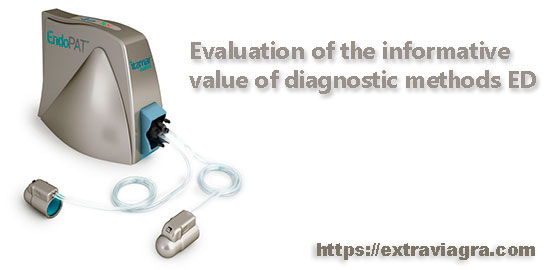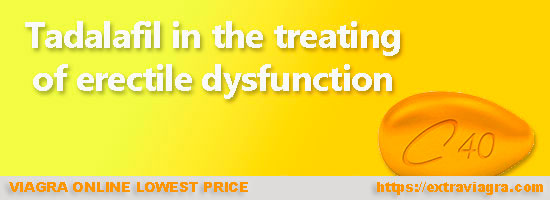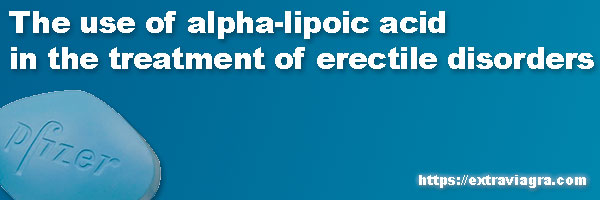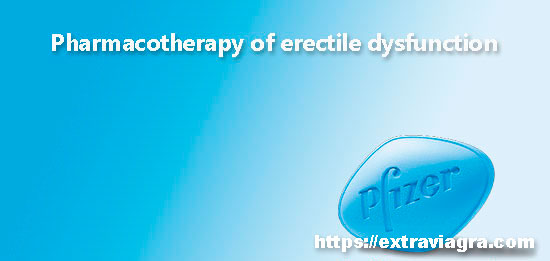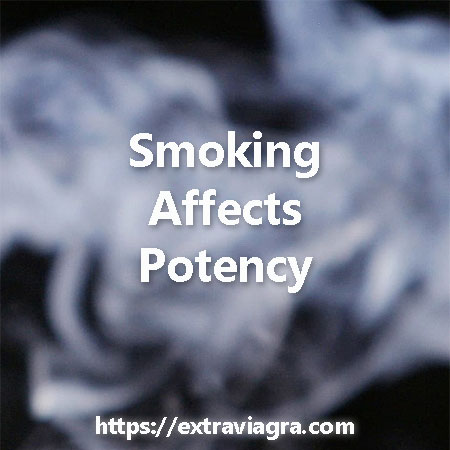Prostatitis and erectile dysfunction-at all times, men have faced these problems. There is no” age ” in this insidious disease, it can appear even in young men. It is known that one of the causes of erectile dysfunction is chronic prostatitis. Therefore, due to such a close relationship between the two diseases, the approach to the treatment of erectile dysfunction should be comprehensive.
What is erectile dysfunction?
Normal erectile function in a man includes the ability to get an erection hard enough to penetrate a woman’s vagina, and maintain that erection long enough to complete sexual intercourse.
Erectile dysfunction is the inability to obtain and / or maintain a penile erection sufficient for adequate sexual relations. Early signs are loss of a morning erection, premature ejaculation, and lack of interest in sexual activity. It is known that smoking, drug use, and alcohol abuse play an important role in this issue. The risk of developing erectile dysfunction increases with concomitant conditions such as type II diabetes, obesity, cardiovascular disease, hypertension, and dyslipidemia. However, the most common cause of erectile dysfunction is infectious diseases, with prostatitis in the first place.
What is prostatitis?
Prostatitis is an inflammatory disease of the prostate gland. It can affect all men: those who are in monogamous or polygamous relationships, and even virgins. Prostatitis is a very common pathology of the genitourinary system. Among the serious consequences of this disease can be called erectile dysfunction – many men mistakenly associate “failures” in sexual life with stress at work, fatigue and lack of sleep. But modern research has shown that infectious diseases, such as prostatitis, are most often the cause of problems in sexual relations.
To get rid of prostatitis, as well as to avoid serious complications (for example, impotence and infertility), it is necessary to seek qualified medical help from a urologist-andrologist when the first symptoms appear.
The main symptoms of prostatitis
- Frequent urination.
- Feeling of incomplete emptying of the bladder.
- Pulling pains and discomfort in the lower back, lower abdomen and perineum.
- Whitish or greenish discharge from the urethra.
- Pain and heaviness in the anus.
- Decreased libido and potency.
Prostatitis and erectile dysfunction, what is the connection?
If the endothelium of the vessels of the penis is damaged by exposure to chronic diseases and toxins, this leads to a decrease in erection.
However, there is another version: most doctors believe that sexual disorders in prostatitis are usually psychological in nature. Constant and exhausting pain causes depression and increased anxiety, unpleasant symptoms and chronic pain syndrome affect not only the general well-being, but also the mood of the man, brings him stress and discomfort. However, most modern urologists are of the same opinion: the cause of erectile dysfunction lies in organic damage to internal organs.
The importance of the prostate gland in the process of erection
Erection from the point of view of normal physiology is caused by complex neurovascular mechanisms, with several central and peripheral neurological mechanisms involved in addition to molecular, vascular, psychological and endocrinological factors, and the balance between them is what ultimately determines the functionality of the penis.
An erection is not a mechanical act that can be used as a hydraulic jack to lift at any time. It is a subtle physiological process that begins with a stimulus perceived by the brain, and that comes from visual perception, smell, sensation, or touch.
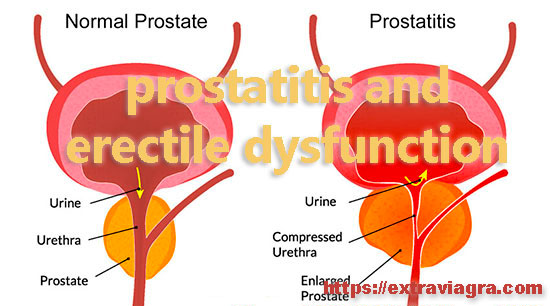
A person’s sensitivity to this sexual stimulus largely depends not only on their level of the hormone testosterone, but mainly on its conversion to the active metabolite dihydrotestosterone, which is formed inside a healthy prostate under the influence of an enzyme called alpha-reductase. And if there are problems with the prostate gland, respectively, problems will appear with the metabolite, which will lead to difficulties during sexual intercourse.
Restoration of potency and treatment of prostate damage
If erectile dysfunction occurred against the background of infection, then no Viagra will help: it is necessary to remove the main cause.
Bacterial prostatitis, like any infection, is treated with antibiotics. However, to create the necessary concentration of drugs in the prostate, in the focus of infection, antibiotics are very difficult, and sometimes impossible. This is due to the fact that as a result of inflammation and swelling in the prostate, blood supply is significantly reduced. Only complex treatment will be effective – a combination of medications and physiotherapy that improves blood supply to the prostate gland, relieves its swelling. The doctor may prescribe such courses as extracorporeal magnetic stimulation, vibromagnetolaser massage, sinusoidal modulated currents, shock wave therapy, ozone therapy.
If the doctor prescribed the correct treatment and the man followed all the prescriptions and recommendations, then with the elimination of inflammation in the prostate, violations in sexual life disappear without a trace.
Prostatitis and erectile dysfunction: prevention
- Regular sex life (this is a purely individual issue, but up to 30 years of age, the frequency of sexual contact 2-3 times a week is considered the norm).
- Hygiene during sexual intercourse.
- Healthy lifestyle.
- Exclusion of injuries and hypothermia.
- Regular urological examination (at least once a year for men over 40 years of age).
A person’s recommended lifestyle should include regular exercise, adequate sleep, smoking cessation, a balanced diet with an emphasis on Mediterranean food, and moderate alcohol consumption.
In order to feel masculine strength for as long as possible and maintain a high quality of life, when the first unpleasant symptoms appear, do not delay a visit to a qualified urologist-andrologist. Complete a comprehensive urological examination, get an accurate diagnosis and effective treatment.




